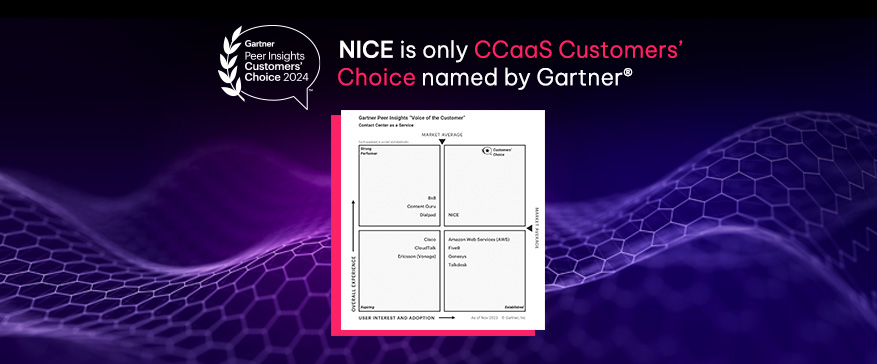What is Customer Engagement?
Customer engagement refers to the depth and richness of the relationship between businesses and their customers. Customer engagement is the sum of all a company's interactions with a customer and the resulting impact on how that customer thinks and feels about that company. Those touchpoints can take many forms - retail store purchases, TV commercials, promotional emails, corporate Facebook posts, and interactions with customer service. Every time a customer and business interact, whether passively or through a third party, there is an opportunity to strengthen or weaken customer engagement. These touchpoints include more than selling; they are part of providing customers with helpful information, acknowledging them in a personalized way, and making them feel good about the brand.
Customer engagement is an essential concept because it drives behavior. Studies show that highly engaged customers represent a 23% premium in key financial metrics compared to average engagement. Customers with solid business relationships are more likely to purchase additional products from that business. High customer engagement can also lead to word-of-mouth referrals, a powerful marketing technique.
Unlike survey metrics like Net Promoter Score (NPS), Customer Satisfaction (CSAT) and Customer Effort Score (CES), there’s no single, consistent definition of customer engagement. Largely speaking, though, customer engagement consists of the ongoing interactions between a customer and a brand, via whatever channels the customer chooses to engage with. In an increasingly digital world, that likely means interactions that go far beyond the phone to also include social media, websites, text and email. Nine out of 10 customers now demand a seamless experience when moving from phone to text or chat and back again, and about one-third of customers consider speaking with a knowledgeable and friendly agent to be the most important aspect of customer service.
The business value of customer advocacy is significant. Companies focused on improving NPS/CSAT and word of mouth are found to have a $12M increase in revenue for every one-point increase in NPS. They realize $34M in additional revenue for every 1% decrease in negative word of mouth (sentiment).
COVID-19 has only increased the importance of customer engagement across industries—54% of people in a recent survey said companies should expand the customer engagement methods they use, including how they use digital channels. Nearly 6 in 10 said how they engage with companies transformed during the pandemic.
Are customers engaged?
Many companies calculate a customer engagement score, or a single number that is used to measure how engaged customers are. Customer engagement analytics, for example, lets organizations take interaction data from any source at any customer touchpoint and weave it into an end-to-end customer journey complete with metrics and insights that help organizations understand their customers and serve them better.
There are a variety of ways companies can calculate an engagement score, including by incorporating data related to:
- Guest checkout rates (when a customer creates an account, they are more likely to come back to make another purchase).
- Purchase frequency.
- Average order value.
- Repeat purchase rate.
- Average time on site/page.
- Open and click-through rates.
- Social media interaction.
- Number of form fills.
- Direct user feedback (NPS/CSAT scores or online reviews), etc.
- A combination of any or all of the above.
The customer engagement score can be considered at the individual customer level or used to compare engagement between different customer segments. Given all of the potential benefits of customer engagement, it’s important to approach it systematically, with a program intentionally designed to increase customer engagement.
How to build a program to increase customer engagement
Building a plan to engage customers includes these key steps:
- Track and analyze customer behavior on your digital properties and across channels. When done right, customer engagement analytics has no limits; organizations can analyze 100% of their customer interaction data, both historical and real-time, on all channels, instantaneously. It lets organizations take interaction data from any source at any customer touchpoint and weave it into an end-to-end customer journey complete with metrics and insights that help organizations understand their customers and serve them better. Historical and real-time analysis takes just seconds.
- Define goals and the corresponding KPIs. Just as what goes into an organization’s engagement score must be determined, so too must the performance metrics be defined. These will be as unique to each organization.
- Leverage AI-powered CX solutions that unleash the benefits of omnichannel data. Interpretive, predictive and prescriptive insights at the journey level, interaction level and behavioral level power AI-enabled quality management, AI-enabled personalized feedback, and AI-enabled agent guidance and prompts. Targeted surveys gather more intelligent feedback, and supervisors can spend more time on targeted coaching, with reduced effort and cost. Employees get the guidance they need to drive meaningful conversations and self-improve, boosting retention and job satisfaction.
Techniques to increase customer engagement
In what some industry observers have dubbed The Age of the Customer, it’s more critical than ever to retain customers by keeping them happy and engaged with your products or services. The techniques successful contact centers are leveraging include:
- Making the first impression count – at all touchpoints, from digital properties to chats and voice calls. Regardless of channel, the initial impression can set the tone for the entire customer experience.
- Using visual engagement tools, such as screen sharing or live video to show customers the actions they need to take to solve a technical problem. Guiding customers through processes or steps in real time is a much more interactive, personalized experience that can help you forge stronger, deeper relationships with customers.
- Paying attention to the team and agents (they know the customers best, after all). Agents often have insight into broken processes or pain points that aren’t otherwise apparent. As the direct interface with customers, they can shed light on barriers to delivering an exceptional customer experience.
How do contact centers impact customer engagement?
Contact centers certainly aren't the only business function that impacts customer engagement, but they can strongly influence it. After contacting customer service, a consumer needs to feel good about the interaction, which means their problem was resolved efficiently, the agent was empathetic and engaging, and the business knew who they were and their history with the company. This requires the right staff and tools to support them, including customer relationship management (CRM) applications, automatic contact distributors (ACDs) capable of intelligent voice and digital contact routing, and workforce management applications to ensure appropriate staffing levels. Contact centers can strengthen customer engagement and should align to build customer relationships.
Why is Customer Engagement Important?
Customer engagement is the lifeblood of a thriving business. In an era when customer expectations are higher than ever and brand loyalty is elusive, understanding and implementing successful customer engagement strategies is crucial. Here are the reasons why customer engagement is so important:
Boosts Customer Retention and Loyalty
When customers are actively engaged, they are likely to stay with a brand longer. Engaging customers through personalized messages, rewards programs, and exceptional customer service fosters customer loyalty. Loyal customers bring in consistent revenue and are more likely to advocate for the brand, attracting new customers.
Increases Customer Lifetime Value
An engaged customer is likely to do business with a company repeatedly. By providing positive customer experiences, the customer lifetime value - the net profit contributed by the customer over the entire period they are associated with the brand - is increased. This is an essential metric for understanding the long-term value of maintaining customer relationships.
Lowers Customer Acquisition Costs
Acquiring new customers is significantly more expensive than retaining existing ones. By focusing on engagement strategies that keepexisting customers happy, the need to spend exorbitantly on acquiring new ones is reduced.
Enhances Brand Reputation
Engaged customers often become brand advocates. They share their positive experiences with friends, family, and social media channels. This word-of-mouth marketing improves a brand’s reputation and is highly trusted by prospective customers.
Provides Valuable Feedback
Engaged customers are more likely to provide feedback. This feedback is a treasure trove of information that can be used to improve products and services. By listening to feedback and making necessary changes, companies show that their customers' opinions matter, enhancing customer satisfaction and loyalty.
Facilitates Better Understanding of Customer Behavior
Through engagement, businesses can collect data on customer interactions, preferences, and pain points. Analyzing this data helps understand customer behavior, which is invaluable in tailoring products, services, and marketing campaigns to meet customer needs.
Builds Emotional Connections
Customer engagement is not just about transactions; it’s about building emotional connections. When customers feel emotionally connected to a brand, they are more forgiving of mistakes, more likely to choose your brand over competitors, and more willing to advocate for it.
Increases Revenue
Ultimately, all of the above points culminate in increased revenue. Engaged customers buy more, advocate more, and remain loyal. This leads to consistent revenue streams and can significantly impact the bottom line.







